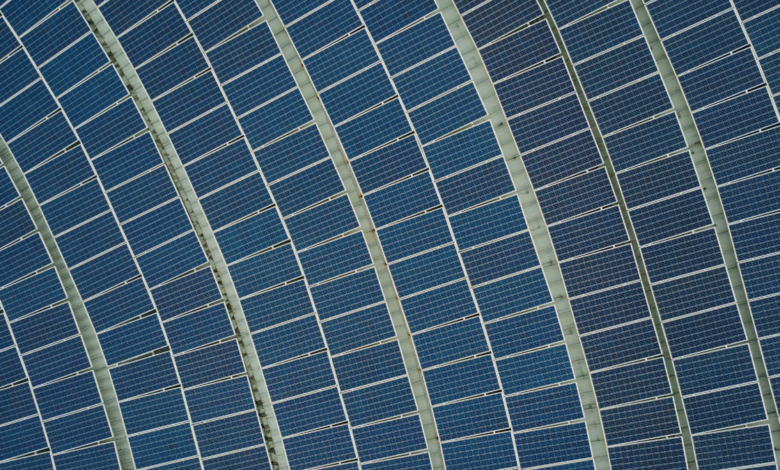EU Commission: new directions to accelerate renewables

Accelerate European renewables by facilitating permits and improving auctions
“Greater predictability and faster authorization are key to sending the right investment signals throughout the renewable energy value chain”. With these words, the European Commissioner for Energy, Kadri Simson, presented this morning the new instruments of the European Commission to accelerate renewables in the bloc. Two of the focuses of the action are: on the one hand helping member countries to juggle permitting procedures and, on the other improving the design of national auctions dedicated to RES.
Not coincidentally, the effort coincides with the second anniversary of the REPowerEU package. It serves as a bridge to the completion of the revised renewable energy directive, or RED III, which EU member states are required to incorporate into their national laws. But what’s the true issue here? a set of rules and recommendations aimed at bolstering the European Green Deal and increasing demand for clean technologies “made in Europe”.
“Today’s Commission guidelines will help Member States accelerate renewable energy,” Simson explained. We see in detail the EU initiative
read also Born the European Solar Charter to support the photovoltaic made in EU
Faster and simpler authorisation procedures
Among the instruments made available to the Twenty-seven is the update of the recommendation and related guidelines to accelerate permitting procedures. The document provides examples of good practice on faster and simpler permit granting procedures, suggesting the creation of a unified application process for the entire process. It also emphasises the importance of digitisation and the participation of the community, human resources and skills; suggests simplified authorisation procedures for small-scale renewables and for self-consumers; explains how to better manage site selection procedures and network connections.
“Member States – reads – should limit to the minimum necessary areas where it is not possible to develop renewable energy (“exclusion zones”). They should provide clear and transparent information with reasoned justification on restrictions on distance from accommodation and from areas of military or civil aviation. Restrictions should be based on concrete data and designed in such a way as to achieve the intended purpose while maximising the availability of space for the development of renewable energy projects, taking into account other spatial planning constraints”.
Areas of Acceleration of Renewables, how not to go wrong
The Commission also adopted a further guidance document on the designation of acceleration zones for renewable energies. Key elements for the selection of such areas are the availability of digital tools for planning and mapping, and data on renewable capacity and potential environmental impact. The EU Executive explains how wind and solar installations can be installed along transport infrastructure and in the immediate vicinity “with multiple opportunities and advantages”. “Solar panels can also be installed on noise barriers or shelters along highways or railways, minimizing territorial and environmental constraints”, reads the text.
According to Brussels, mines can also be suitable sites to install solar photovoltaic energy and, in some cases, wind energy. “Artificial inland water bodies, lakes or reservoirs usually have little value in terms of biodiversity, which makes them suitable candidates to be designated as Acceleration Zones”. The document also mentions for solar installations urban waste water treatment sites, degraded soils unsuitable for agriculture and irrigation channels. Finally, it points out that when designating acceleration areas, account must also be taken of the likelihood of cross-border impacts on the territory of other Member States.
Finally, in its guidelines, the Commission emphasises the role of appropriate stakeholder involvement and public consultation to facilitate the effective designation of such acceleration zones.
Accelerate renewables through better auction design
The new EU Guide describes a set of general principles that apply to renewable energy auctions, and design-specific aspects. These include the use of criteria other than price, both as a prequalification element and as an award criterion, measures to encourage the full and timely competition of projects, the use of negative bids and bid ceilings. The objective? To make these procedures more harmonised and efficient, in line with industry legislation with zero net emissions.
Renewable auctions and criteria other than price
“When the auctioneer defines the methodology for evaluating bids against a given set of criteria, he may do so in a measurable quantitative or qualitative manner. Examples of quantitative assessments include (the list is not exhaustive):
- technological preparation;
- the level of innovation used;
- percentage of recyclability;
- the carbon footprint of the project;
- in the case of contribution to resilience, percentage of net-technologyzero or its main specific components from third countries from which the EU is heavily dependent for the supply of a renewable energy technology or one of its main components.
Examples of possible qualitative assessments include (the list is not exhaustive):
- the quality of measures to avoid collisions with birds;
- promoting positive effects on (marine) habitat conservation;
- quality of the proposed measures to involve citizens” (benefits for local communities).
For some criteria other than price used as prequalification criteria, such as responsible business conduct, IT security and data security, it might be appropriate for the Commission to require the tenderer to comply with the applicable legislation. It is not recommended to use criteria other than price for smaller projects or for auctions with a significant number of bidders where the inclusion of considerations other than price could increase costs for developers and administration less optimally.
The EU auction platform
In order to further improve visibility and predictability for investors throughout the whole renewable energy value chain, the Commission also updated today the Union platform for the development of renewable energy, an online system in which Member States will publish basic information on their auction calendars. This information should include the timing and frequency of auctions, auctioning capacity, the estimated budget and eligible technologies, as required by the Renewable Energy Directive. The platform will provide businesses with a single information point for all renewable energy auctions planned across the EU.





